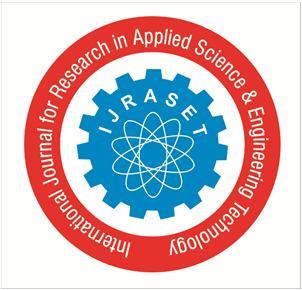
3 minute read
International Journal for Research in Applied Science & Engineering Technology (IJRASET)

ISSN: 2321-9653; IC Value: 45.98; SJ Impact Factor: 7.538
Advertisement
Volume 11 Issue II Feb 2023- Available at www.ijraset.com
V. SCOPE OF PROJECT
1) It’s a predictive model that estimates at the level of individual customers the propensity (or susceptibility) they have to leave. For each customer at any given time, it tells us how high the risk is of losing them in the future.
2) It is important to note that this is the probability of belonging to the group of clients who leave.
3) Thus, it is the propensity to leave and not the probability of leaving. However, it is possible to estimate the probability through a churn model.
References
[1] S. Babu, D. N. Ananthanarayanan, and V. Ramesh, ‘‘A survey on factors impacting churn in telecommunication using datamininig techniques,’’ Int. J. Eng. Res. Technol., vol. 3, no. 3, pp. 1745–1748, Mar. 2014.
[2] C. Geppert, ‘‘Customer churn management: Retaining high-margin customers with customer relationship management techniques,’’ KPMG & Associates Yarhands Dissou Arthur/Kwaku Ahenkrah/David Asamoah, 2002.
[3] W. Verbeke, D. Martens, C. Mues, and B. Baesens, ‘‘Building comprehensible customer churn prediction models with advanced rule induction techniques,’’ Expert Syst. Appl., vol. 38, no. 3, pp. 2354–2364, Mar. 2011.
[4] Y. Huang, B. Huang, and M.-T. Kechadi, ‘‘A rule-based method for customer churn prediction in telecommunication services,’’ in Proc. Pacific– Asia Conf. Knowl. Discovery Data Mining. Berlin, Germany: Springer, 2011, pp. 411–422.
[5] A. Idris and A. Khan, ‘‘Customer churn prediction for telecommunication: Employing various various features selection techniques and tree based ensemble classifiers,’’ in Proc. 15th Int. Multitopic Conf., Dec. 2012, pp. 23–27.
[6] M. Kaur, K. Singh, and N. Sharma, ‘‘Data mining as a tool to predict the churn behaviour among Indian bank customers,’’ Int. J. Recent Innov. Trends Comput. Commun., vol. 1, no. 9, pp. 720–725, Sep. 2013.
[7] V. L. Miguéis, D. van den Poel, A. S. Camanho, and J. F. e Cunha, ‘‘Modeling partial customer churn: On the value of first product-category purchase sequences,’’ Expert Syst. Appl., vol. 12, no. 12, pp. 11250–11256, Sep. 2012.
[8] D. Manzano-Machob, ‘‘The architecture of a churn prediction system based on stream mining,’’ in Proc. Artif. Intell. Res. Develop., 16th Int. Conf. Catalan Assoc. Artif. Intell., vol. 256, Oct. 2013, p. 157.
[9] P. T. Kotler, Marketing Management: Analysis, Planning, Implementation and Control. London, U.K.: Prentice-Hall, 1994.
[10] F. F. Reichheld and W. E. Sasser, Jr., ‘‘Zero defections: Quality comes to services,’’ Harvard Bus. Rev., vol. 68, no. 5, pp. 105–111, 1990.
[11] J. Hadden, A. Tiwari, R. Roy, and D. Ruta, ‘‘Computer assisted customer churn management: State-of-the-art and future trends,’’ Comput. Oper. Res., vol. 34, no. 10, pp. 2902–2917, Oct. 2007.
[12] H.-S. Kim and C.-H. Yoon, ‘‘Determinants of subscriber churn and customer loyalty in the Korean mobile telephony market,’’ Telecommun. Policy, vol. 28, nos. 9–10, pp. 751–765, Nov. 2004.
[13] Y. Huang and T. Kechadi, ‘‘An effective hybrid learning system for telecommunication churn prediction,’’ Expert Syst. Appl., vol. 40, no. 14, pp. 5635–5647, Oct. 2013.
[14] A. Sharma and P. K. Kumar. (Sep. 2013). ‘‘A neural network based approach for predicting customer churn in cellular network services.’’ [Online]. Available: https://arxiv.org/abs/1309.3945
[15] Ö. G. Ali and U. Aritürk, ‘‘Dynamic churn prediction framework with more effective use of rare event data: The case of private banking,’’ Expert Syst. Appl., vol. 41, no. 17, pp. 7889–7903, Dec. 2014.
[16] A. Amin, F. Al-Obeidat, B. Shah, A. Adnan, J. Loo, and S. Anwar, ‘‘Customer churn prediction in telecommunication industry using data certainty,’’ J. Bus. Res., vol. 94, pp. 290–301, Jan. 2019.
[17] S. A. Qureshi, A. S. Rehman, A. M. Qamar, A. Kamal, and A. Rehman, ‘‘Telecommunication subscribers’ churn prediction model using machine learning,’’ in Proc. 8th Int. Conf. Digit. Inf. Manage., Sep. 2013, pp. 131–136.
[18] V. Lazarov and M. Capota, ‘‘Churn prediction,’’ Bus. Anal. Course, TUM Comput. Sci, Technische Univ. München, Tech. Rep., 2007. [Online]. Available: http://citeseerx.ist.psu.edu/viewdoc/download? doi=10.1.1.462.7201&rep=rep1&type=pdf
[19] R. Vadakattu, B. Panda, S. Narayan, and H. Godhia, ‘‘Enterprise subscription churn prediction,’’ in Proc. IEEE Int. Conf. Big Data, Nov. 2015, pp. 1317–1321.
[20] V. Umayaparvathi and K. Iyakutti, ‘‘Applications of data mining techniques in telecom churn prediction,’’ Int. J. Comput. Appl., vol. 42, no. 20, pp. 5–9, Mar. 2012.
[21] A. T. Jahromi, M. Moeini, I. Akbari, and A. Akbarzadeh, ‘‘A dual-step multi-algorithm approach for churn prediction in pre-paid telecommunications service providers,’’ J. Innov. Sustainab., vol. 1, no. 2, pp. 2179–3565, 2010.
[22] V. Yeshwanth, V. V. Raj, and M. Saravanan, ‘‘Evolutionary churn prediction in mobile networks using hybrid learning,’’ in Proc. 25th Int. FLAIRS Conf., Mar. 2011, pp. 471–476.
[23] G. Nie, W. Rowe, L. Zhang, Y. Tian, and Y. Shi, ‘‘Credit card churn forecasting by logistic regression and decision tree,’’ Expert Syst. Appl., vol. 38, no. 12, pp. 15273–15285, Nov./Dec. 2011.
[24] S. V. Nath and R. S. Behara, ‘‘Customer churn analysis in the wireless industry: A data mining approach,’’ in Proc. Annu. Meeting Decis. Sci. Inst., vol. 561, Nov. 2003, pp. 505–510.
[25] Y. Zhang, J. Qi, H. Shu, and J. Cao, ‘‘A hybrid KNN-LR classifier and its application in customer churn prediction,’’ in Proc. IEEE Int. Conf. Syst., Man Cybern., Oct. 2007, pp. 3265–3269.
[26] H. Yu et al., ‘‘Feature engineering and classifier ensemble for KDD cup 2010,’’ Dept. Comput. Sci. Inf. Eng., National Taiwan Univ., Taipei, Taiwan, Tech. Rep., 2010, vol. 1, pp. 1–16. [27]
[27] L. Zhao, Q. Gao, X. Dong, A. Dong, and X. Dong, ‘‘K-local maximum margin feature extraction algorithm for churn prediction in telecom,’’ Cluster Comput., vol. 20, no. 2, pp. 1401–1409, Jun. 2017.




